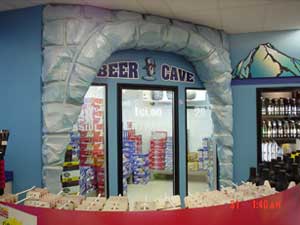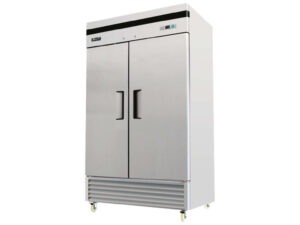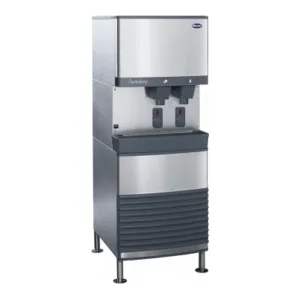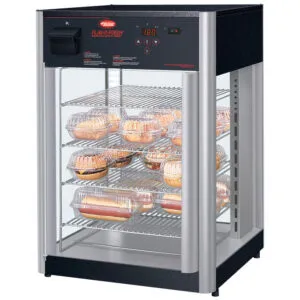When it comes to cooler insulation, polystyrene and polyurethane are two of the most popular materials. Which one is better? Which one should you choose for your cooler? Jay Comp Development has a team of professionals to help you once you have made your decision. In this blog post, we will compare polystyrene vs. polyurethane and help you decide which material is best for your needs.

Polystyrene Vs Polyurethane
EPS (Expanded Polystyrene) Vs Polyurethane. You Decide?? Polyurethane is a new product with roughly 35 years of testing. Expanded Polystyrene has been used for approximately 50 years. Polyurethane has been developed to alleviate the shortfalls of EPS.
R- Value
Polyurethane is the most efficient man made insulation in the world. Polyurethane can be found in most refrigerators, freezers, and in some high end personal coolers. When calculated per inch of insulation, polyurethane has no equal. The walk in coolers and walk in freezers that we distribute are made of polyurethane. EXPANDED
- Polystyrene has a R-value as high as R-5 and as low as R-2 per inch.
- Polyurethane has an R-Value as high as R-7 and as low as R-8 / per inch.
So how does this affect you when buying a Walk In Cooler?
Operating Cost! You will save money in the initial investment however you will spend much more money in energy consumption. Low efficiency equals higher operating cost! Moisture Resistance – moisture resistance is a very important factor. Moisture causes mildew, mold and once panels become saturated it causes problems with efficiency. Polyurethane has the lowest moisture permeability ratings of any product manufactured; Polyurethane is number one in the building industry today.
- Polyurethane Permeance rating is 1.2.
- EPS Permeance rating on is 2.0 to 5.0

So what does this mean for the Owner Operator?
As you use this walk-in it is subjected to moisture introduced through dew point and moisture increased in the working environment. Polystyrene absorbs water more readily than does Polyurethane, resulting in lowered efficiency over the life span of the product.
Fire Resistance
We distribute panels that contain UL Class 1 rated polyurethane foam. The UL Class 1 Rating means that the polyurethane contained within the panel is not a source for fire. Polyurethane will not burn on its own. In fact, when left to burn, the fire will extinguish itself. A UL Class 1 rating is the highest rating a building product can obtain. Polyurethane is better defined as a thermal-set plastic, which means this product will not melt at temperatures below 1,000 degrees. Expanded Polystyrene on the other hand will soften at 180 degrees and will melt at 240 degrees. You be the judge!
- Polyurethane does not melt at temperatures below 1000 degrees
- Styrene melts at 240 degrees
You can possibly reduce your insurance cost and you will not need to use sprinklers inside our walk in coolers! Another added value!
Density
Density determines the strength of a product.
- The density of EPS is 1 lb.
- The density of Polyurethane is 2.2lb.
A simple comparison would be to take a disposable portable cooler from your local convenience store and stand on it. Then stand on a Coleman ice chest. Advantage: polyurethane.

Chemical Resistance
Most adhesive chemicals will not affect Polyurethane. Expanded Polystyrene will react violently to petroleum based products and liquid nail which will burn thru EPS.
Manufacturing
One of the biggest differences between EPS and Polyurethane is in the manufacturing of walk in cooler panels. Both products are encased by an outer layer of wood, metal or fiberglass, however, this is where the similarity ends. Polyurethane bonds itself to the outside covering of the panel by its own adhesion process. Polyurethane is one of the best glues used in the industry today. On the other hand Expanded Polystyrene is glued to the outside wall panel coverings and may or may not achieve adhesion.
- Polyurethane provides Excellent Adhesive
- Polyurethane provides Excellent R-Factor
- Expanded Polystyrene must be glued to the substrate
Expanded Polystyrene is a marginal Insulator In layman’s terms, if you want a cheap alternative with reduced efficiency, marginal structure and increased fire dangers Polystyrene EPS is your solution. On the other hand, if you want to purchase a product that pays you back in efficiency and longevity Polyurethane is your answer! The age-old proverb is still true today. You get what you pay for.

Conclusion
When deciding which insulation material for your cooler, polystyrene is the cheaper option but polyurethane is the better choice. Both materials have their advantages and disadvantages, so it is important to consider what suits your needs best before making a decision. Polyurethane provides superior insulation, adhesive strength and R-factor compared with polystyrene and is therefore a more suitable choice for cooler insulation in many cases. No matter which material you choose, proper care and maintenance of your cooler will ensure it stays in good condition and lasts for many years.
If you want reliable, efficient insulation for your cooler, polyurethane is the way to go. With its superior insulation and longevity, polyurethane will save you time and money in the long run. It’s an investment worth making in order to ensure that your cooler lasts for years to come. Jay Comp Development can help you make the right decision. Contact our professionals today! Help us, help you!


